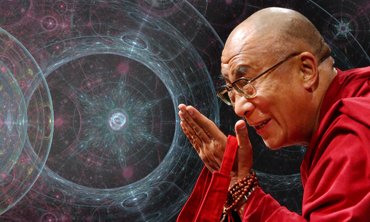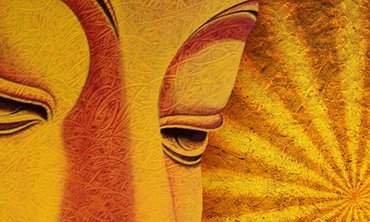AZTLAN CULTURAL CENTER
of Psychology, Philosophy, and Humanities.
Dir.: León Azulay
Civil Association I.G.J. No. 748

Zen Buddhism and the Psychology of the Collective Unconscious
Let's delve into the psychology of Zen Buddhism, drawing on the key ideas of the psychologist and teacher Carl G. Jung, as he is an authority on the subject. One of the most significant proponents of Zen in the West was the monk and teacher DT Suzuki (1870-1966) and his secretary and disciple Alan Watts. Jung collaborated with Suzuki on introducing Zen to the West in the famous book "Introduction to Zen Buddhism."
To understand Zen, we can quote a Zen Master: "For a man, before studying Zen, mountains are mountains, and waters are waters. But when he has seen the truth of Zen through the instruction of a good teacher, mountains are no longer mountains, and waters are no longer waters. Yet, when he actually reaches the abode of rest (the state of Satori), mountains and waters are once again what they are."
Zen is a psychology, not in the Western sense of the term, but rather as the experience of the ultimate reality of all existence and ultimately the mind itself, which is one with all humanity, the unconscious, and collective archetypes, referred to as No-Mind (rationalistic Ego) by Zen.
When it comes to defining what Zen is, we encounter the difficulty of approaching a completely different mentality. You need to know that Zen is one of the many branches of the common trunk that is the original Buddhism from India dating back to the 5th century BCE, known as Hinayana (small vehicle). The philosophical basis it relies on, and according to which any Zen monk is trained, is the doctrine of DharmaDathu. Dharma translates as "Method-Doctrine-Operation," and Dathu as "Element or World."
The Zen expert and practitioner mentioned earlier, Alan Watts, translates these two terms as the Doctrine of the Operation of the Universe. The fundamental concept contained in it is that everything that exists is relative to everything else, and three distortions or errors of the rational mind (rationalist Ego) hinder the experience of what is real, and these are:
1) Things, the conception of the universe as isolated things from each other.
2) Agents, the notion of a separate subject or Ego that performs the action.
3) Reward and punishment, a clear example of this is found in the Judeo-Christian tradition.
We also find it in the erroneous idea of karma exported to the West. The Zen monk, through rigorous monastic discipline, whose goal is to focus all attention on the inner or psychological world, seeks to achieve the experience of Satori (consciousness coupled or integrated with the Self, as Jung called it), to experience what is beyond the three distortions mentioned before.
The monk works directly with the Collective Unconscious, starting from the premise of its existence. Part of his practice is accepting the guidance of a higher consciousness consecrated in the Roshi (Zen Master) besides seeing in it a reflection of his own deep nature, Jung's Self or Hindu Atman.
As Jung clearly pointed out in his introduction to the Eastern part of the Western mind, Europeans and their American descendants must first have a psychological method to provide us with strict knowledge of what the mind is, endowed with structure and in the time of a materialistic view of the world and man, that is, a complete and non-reductionist psychology like modern materialistic theories of Freud and behaviorism are.
The Eastern mind until its colonization by the West did not have to overcome the traps of materialism because it rooted in a mystical experience of existence. In the West, we have to use the methods offered by Evolutionary Psychologies. Otherwise, we approach spirituality full of fanciful ideas expressed in the pursuit of spiritual powers that have had so much press and dissemination in TV series, movies, and best-selling books, a superficial approach to ancient methods of self-transformation from the East.
Some of the methods used by Zen to achieve greater awareness or Satori are: Koan, a kind of paradoxes that attract the emergence of intuition, to reach the experience of the correct answer (understood in terms of Jung as the intelligence of the collective unconscious); Zazen, sitting meditation; the tea ceremony, the art of archery, and the Zen Garden.
















